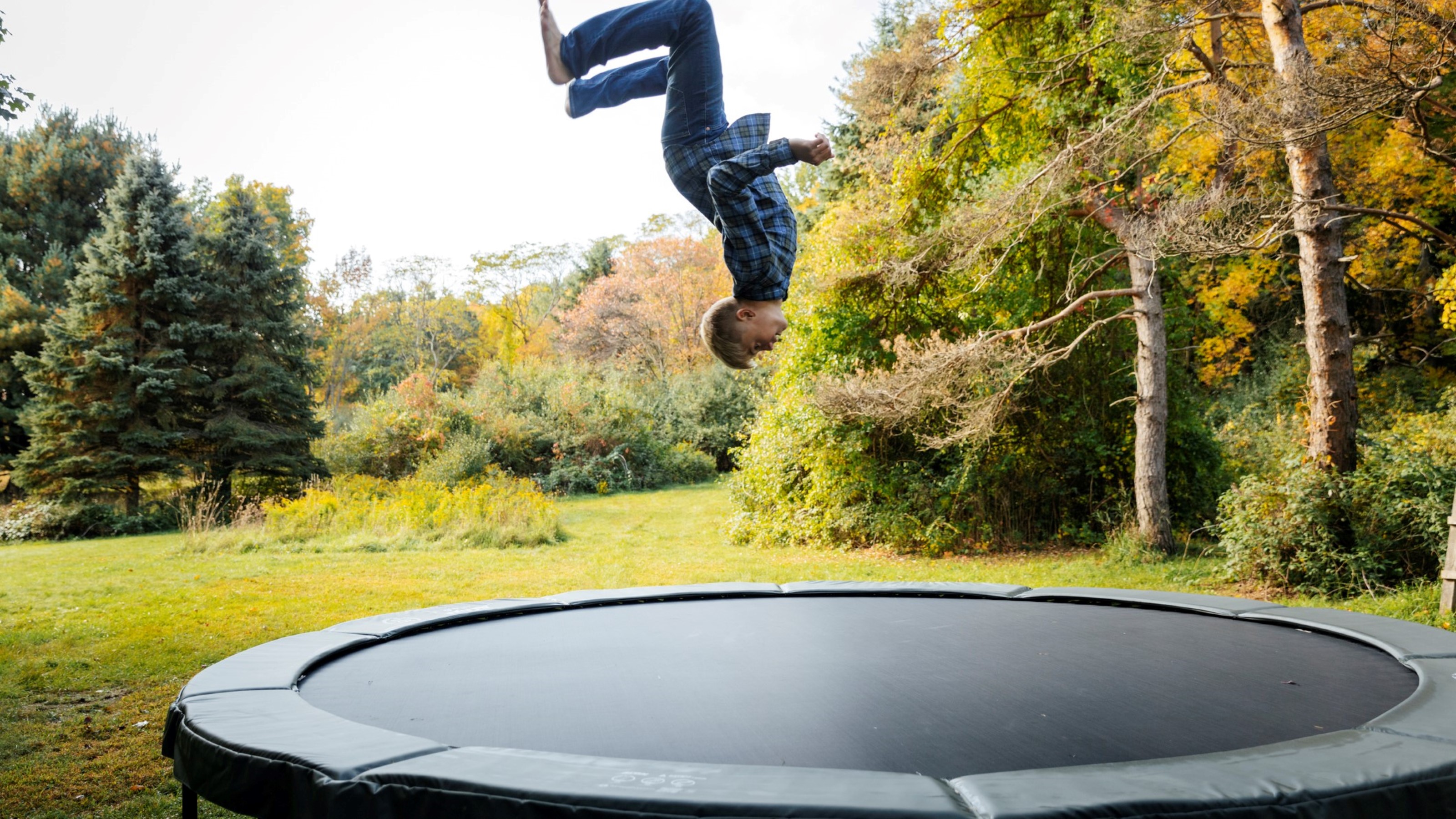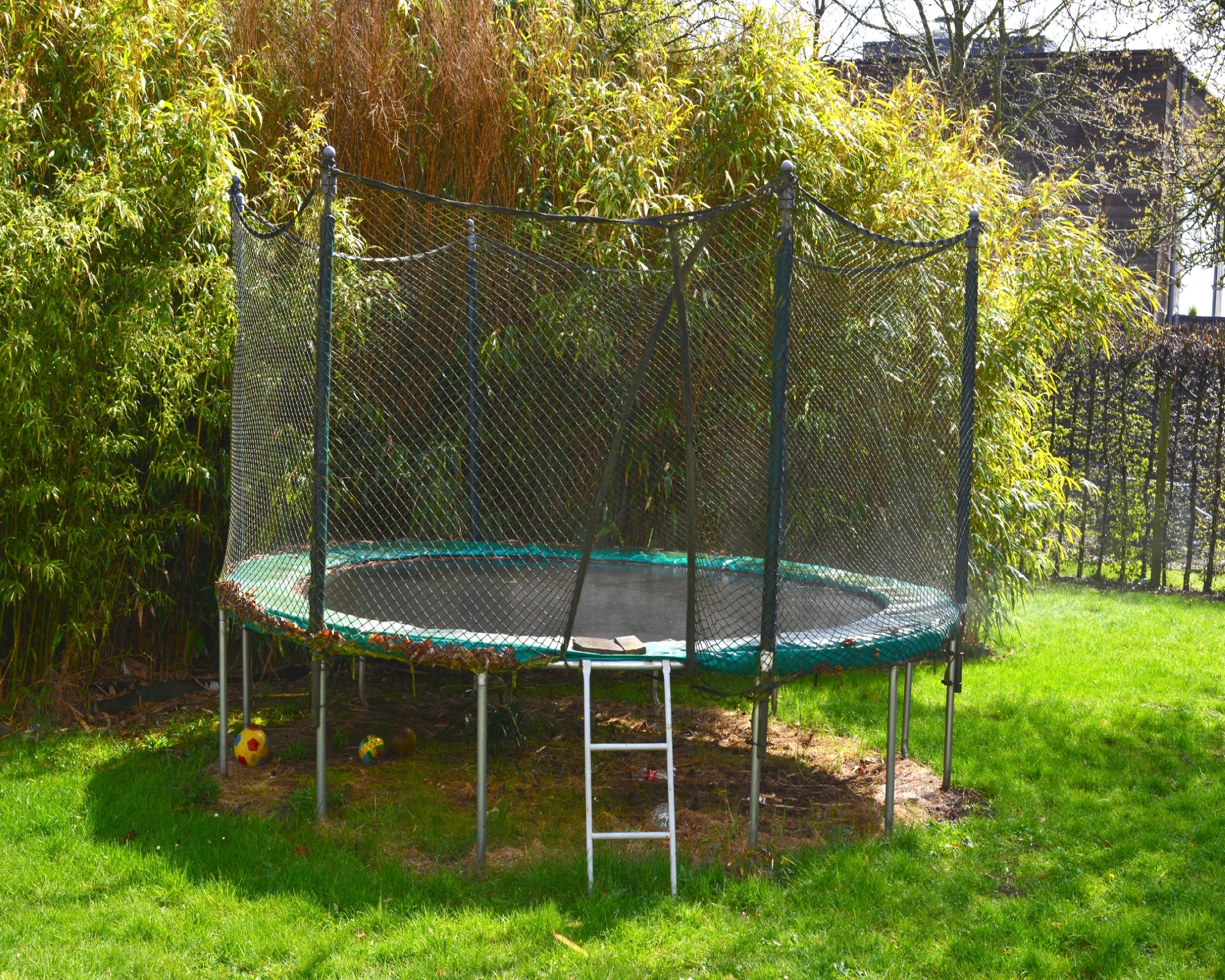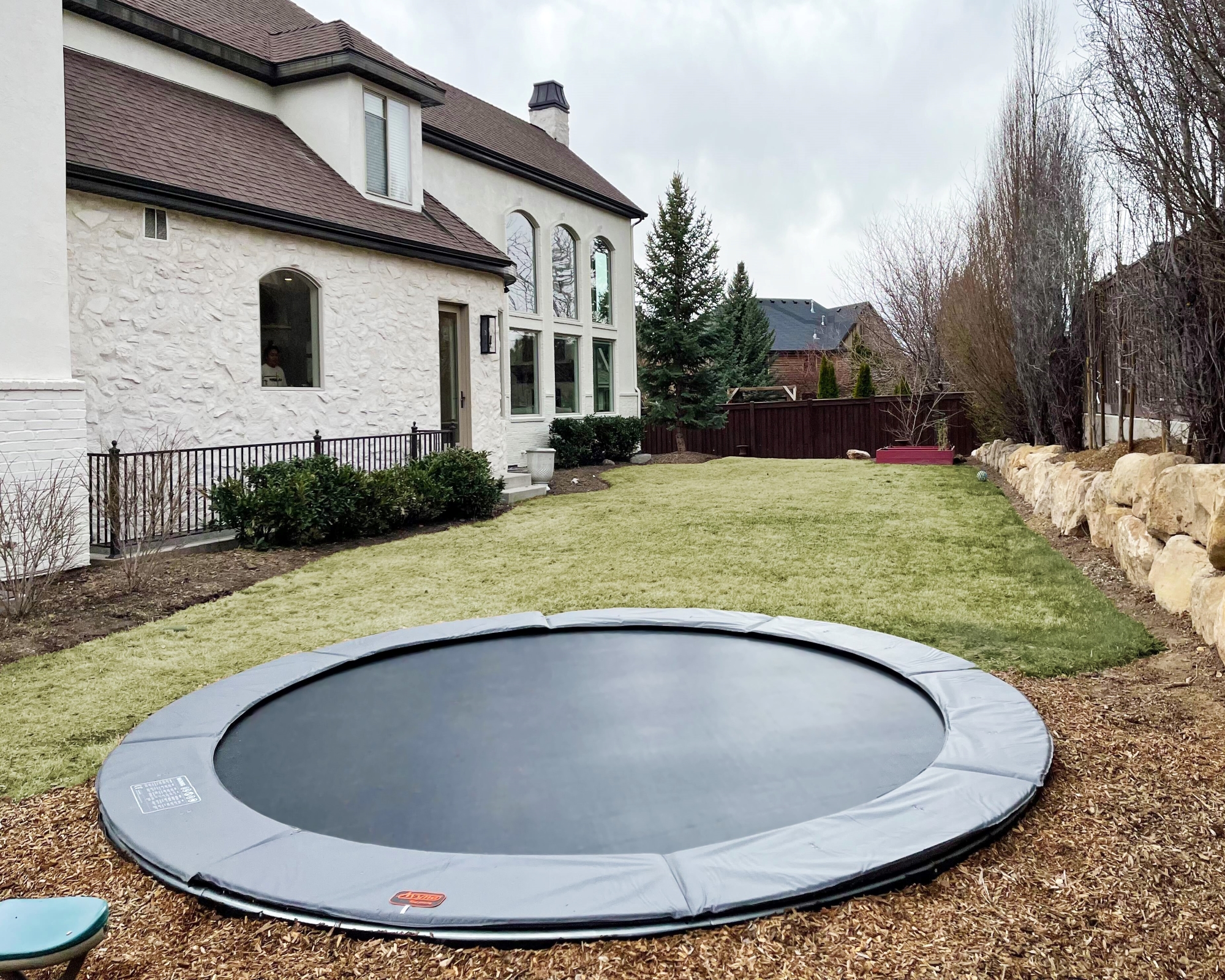Above ground vs inground trampolines: which one is best for you?
Trying to decide between above ground vs inground trampolines? Our expert guide will help you choose the right one for your yard

When it comes to above ground vs inground trampolines, there are a few things to consider when deciding on the right type for you and your yard.
Trampolines have skyrocketed in popularity in recent years, with so many of us using our yards more intensively for pleasure and fitness. The best trampolines can be used for exercising in your yard or to enjoy active family time with your kids.
If you're looking into buying one, though, you've probably noticed that there is a large disparity between different models and types of trampolines. You may be wondering why inground trampolines are substantially more expensive and whether they're worth installing instead of above ground versions.
Before you make a choice, familiarize yourself with what trampoline experts think about above ground vs inground trampolines. This expert advice will help you compare costs, the installation process, and safety profiles before committing.

What's the difference between above ground vs inground trampolines?
As the names suggest, the main differences between above ground and inground trampolines is how they are installed in your backyard.
Inground trampolines require a hole to be dug in your yard and the trampoline then sits across the hole (with the main structure below) so that the trampoline mat that you bounce on is level with the ground. This means you can walk straight on and off the trampoline from your lawn.
Above ground trampolines are typically raised up on legs, so you will need to climb up a ladder to access them. For safety purposes, many above-ground trampolines also come with an enclosure to help prevent children falling off when bouncing.
Are above ground or inground trampolines cheaper?
If you're wondering which is cheaper when it comes to above ground vs inground trampolines, the answer is an above ground model.
Inground trampolines require more labor and time to install, and can also involve extras such as additional landscaping, drainage, and pipe installation on site. Above-ground trampolines are a less permanent structure and can be bought on Amazon for $300-$500.
A good-quality inground trampoline will generally begin at the $500 mark, although you should expect to pay over $1,000 for the best kit. However, you will need to add excavation costs to this price, which generally range between $400 and $1,000, or more if you have a tricky site or hard ground that's difficult to work with.
Altogether, with excavation, installation, and kit costs combined, expect to pay from $2,000-$4,000 for an inground trampoline.
Adding some of the latest trampoline accessories to your setup will further add to the cost.

Which trampoline style is safer?
In terms of trampoline safety, generally speaking, inground trampolines are considered to be safer. Joel Phillips, the Founder of the Home Guide Corner, tells us that 'inground trampolines are way safer than above ground trampolines', with the main reason for this being that an inground trampoline 'has less chance of tipping over.'
However, Brad Mills, VP Marketing at Trampolines.com, advises that while 'many people find an inground kit to be a safer experience', it's still prudent to remember that it's possible to injure yourself, regardless of the type of trampoline you have. You could still land on the ground with an inground setup, even though the height from which you fall will be less.
Brad Mills recommends always choosing a trampoline with an enclosure for the safest possible experience, especially in a family garden. All trampolines, regardless of whether they are above ground or inground, undergo stringent testing before they are sold, so all you need to do is just choose an appropriate design for how you'll be using it.
If you're using yours mainly for fitness for yourself, then you could probably get away with a more open design. If you're investing in one as a fun garden activity for kids, however, you need to make sure that you choose an age-appropriate trampoline for them, just as you would when selecting the best climbing frame.

Installation considerations
As we've mentioned, inground trampolines require more of an installation process than above-ground versions. An above-ground trampoline merely requires a free space in your yard, and even if you decide it's not in the right spot in your garden play area, you can always move your trampoline around to another part of your space.
An inground trampoline will require you (or an installer) to dig a hole in your yard and you need a yard that has adequate drainage. It's not advisable to install an inground trampoline on clay soil, for example, as rainwater will not drain off of it.
Because of how labor-intensive the job is, most people will hire a professional landscaper/trampoline installer to do it. Joe Philips believes that this is worth doing: 'In terms of installation, inground trampolines take a bit more effort than
above-ground trampolines, but it's worth the effort. Especially if you'd have small children jumping on them.'

Above-ground vs inground trampoline: which is better?
Which brings us to the ultimate question: which is better? An inground or above-ground trampoline? Both of our experts agree that an inground trampoline, while more expensive and labor-intensive to install, is worth it. 'The extra cost you pay for an inground trampoline is easily justifiable for its added safety,' says Joel Philips.
'I would definitely recommend an inground trampoline if it's within your budget,' adds Brad Mills. 'It truly becomes part of the yard and you don't have to worry about it blowing away or moving it when you mow the lawn. Another reason I love an inground trampoline is the accessibility factor. Everyone from all ages can use it because it's so easy to get on and off it.'
Having said this, above ground trampolines are not inherently unsafe. If you want more flexibility in where you can place your trampoline, or just want something temporary, for example in a rented yard, then an above ground trampoline will still be the better option for you.
An above ground trampoline from a reputable and well-reviewed brand, provided it has a full enclosure, will be very similar to an inground version. If you live in a climate that's not too windy and want to try out a trampoline before committing to an inground version, then an above ground trampoline is definitely a good choice.
Anna writes about interior design and gardening. Her work has appeared in Homes & Gardens, Livingetc, and many other publications. She is an experienced outdoor and indoor gardener and has a passion for growing roses and Japanese maples in her outside space.
